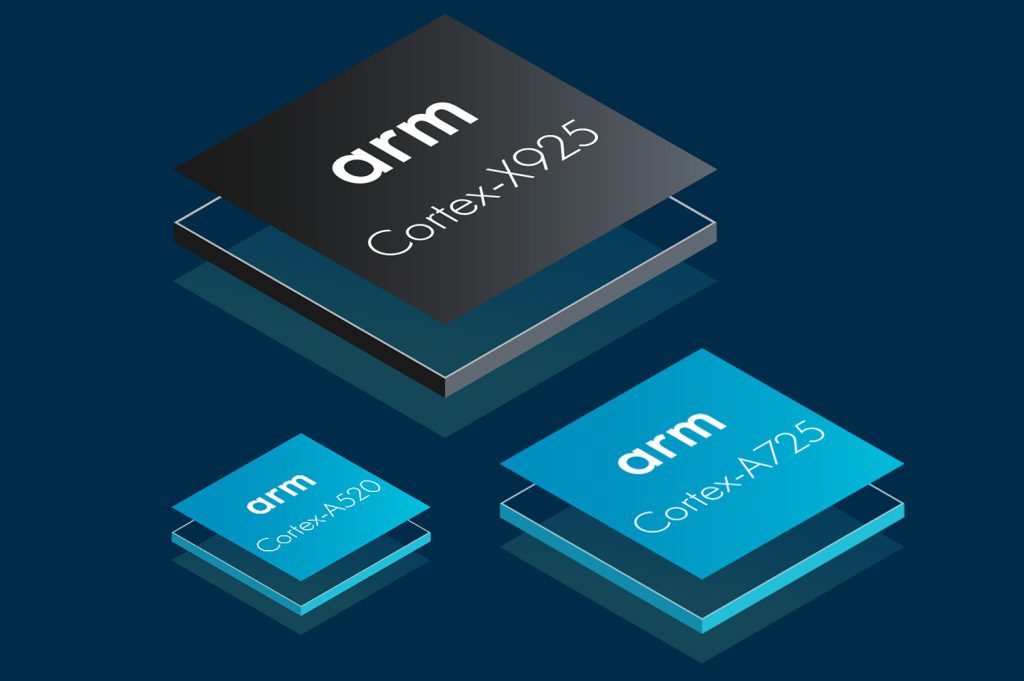
Arm has introduced a new set of Armv9 CPUs optimized for 3nm SoC and new GPUs that are built on 5th Gen GPU architecture as the successor to last year’s Arm Total Compute Solutions 2023 (TCS23).
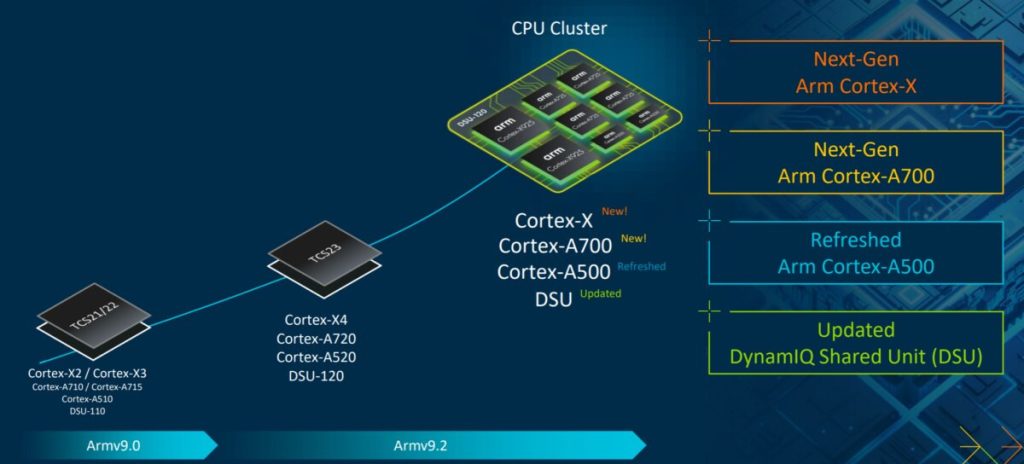
The new additions to the Armv9 CPU portfolio include the Arm Cortex-X925 CPU for ultimate performance and Arm Cortex-A725 CPU for superior sustained performance. There is also the new Arm Cortex-A520 for the best energy efficiency for low intensity workloads, all optimized for 3nm process.
ARM has also updated DynamIQ Shared Unit (DSU-120) to provide lower power and area across Armv9.2 CPU cluster configurations. All these are integrated into the new Arm Compute Subsystems (CSS) for Client, which is Arm’s fastest ever compute platform for Android, said the company.
ARM Cortex-X925

The ARM Cortex-X925, is the successor to Arm Cortex-X4 CPU, which promises 36% single-threaded (peak) performance improvements and 46% AI performance improvements compared to the predecessor.
- An optimized 3nm implementation of Cortex-X925 complemented by a premium subsystem and packaging promises 30% higher performance scores on next-generation consumer devices.
- Improvements to the microarchitecture, including up to 3MB private L2 cache, provide enhanced configurability for CPU cluster implementations across a broad range of consumer devices.
- Tape-out ready Cortex-X925 physical implementation for 3nm helps ARM’s partners to unlock the full PPA (power, performance and area) benefits on the 3nm process, while shortening silicon development and deployment timelines through the high-volume production-ready silicon solution.
ARM Cortex-725
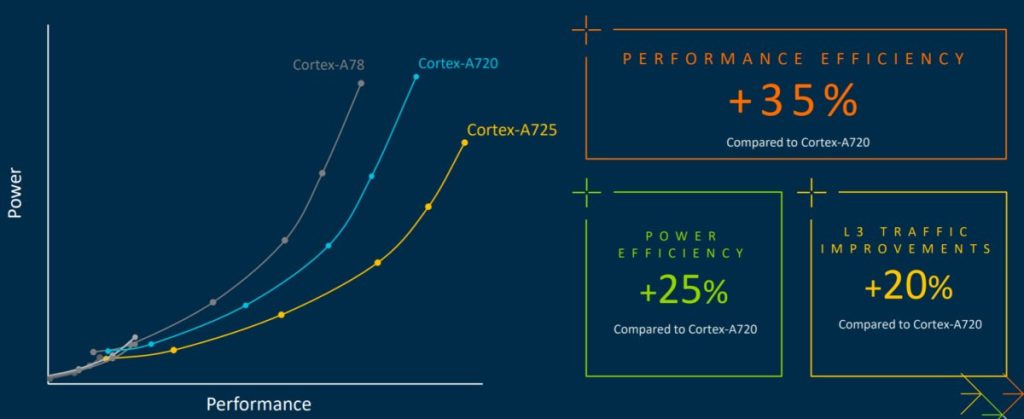
The ARM Cortex-725 is the successor to the Cortex-A720, which promises 35% improvement in performance efficiency and 25% improvement in power efficiency compared to the predecessor.
This also offers optimized implementation on 3nm SoC through Arm’s advanced physical implementation.
ARM Cortex-520 (2024)
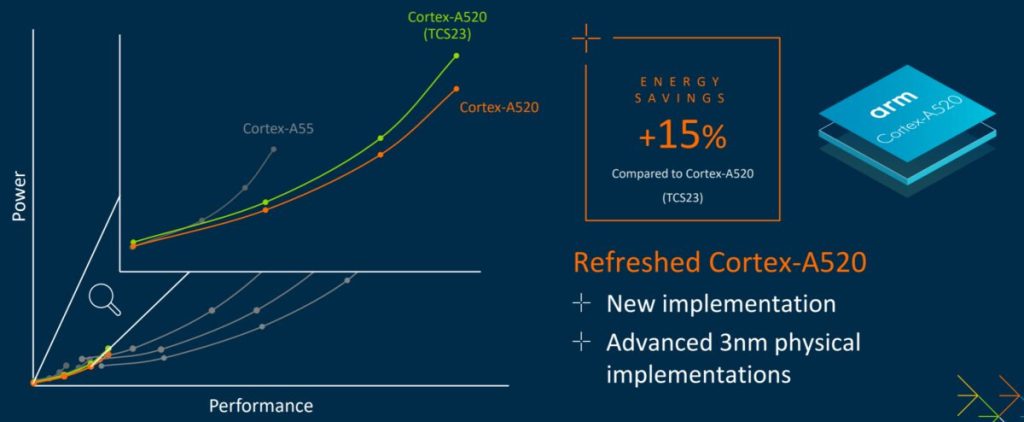
The new Cortex-A520 has the same name as last year’s energy efficient CPU for low intensity workloads. It has the same architecture, but uses advanced 3nm physical implementation. This promises 15% efficiency improvements compared to Cortex-A520 in TCS23, said the company.
DSU-120
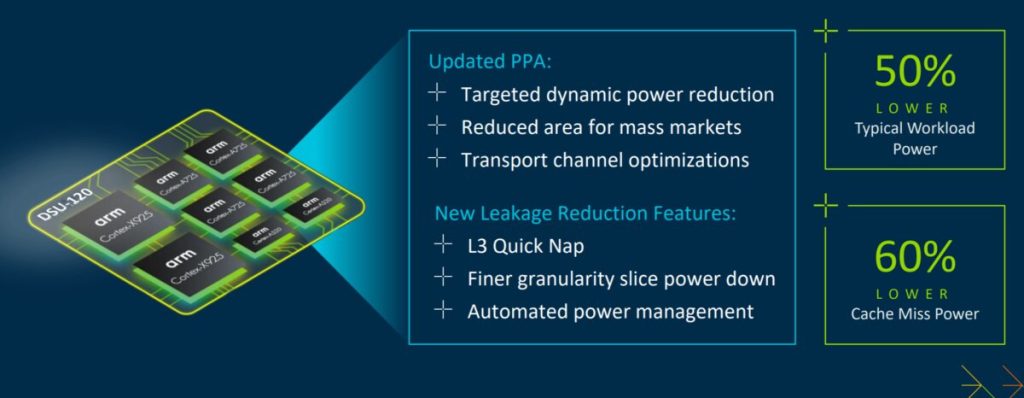
The new DSU-120 Core Cluster for 2024 include new performance and efficiency features, new low power modes and enhancements for mainstream consumer devices, as well as maintaining the option of scaling up to 14 cores for high-performance use cases, said the company.
These contribute to significant power reductions of 50% for typical workloads and 60% lower cache miss power across the CPU cluster to reduce leakage and improve the battery life of consumer devices, said the company.
There are low power modes such as half slice power down and quick nap, and enhancements support a broad range of low and high-intensity AI-based workloads, from biometrics and speech-to-text right through to AI smart camera, content creation and ML-based AAA gaming, according to ARM.
Immortalis-G925
The new Immortalis-G925 promise 37% better performance (fps) than last year’s Immortalis-G720 while using 30% less power.
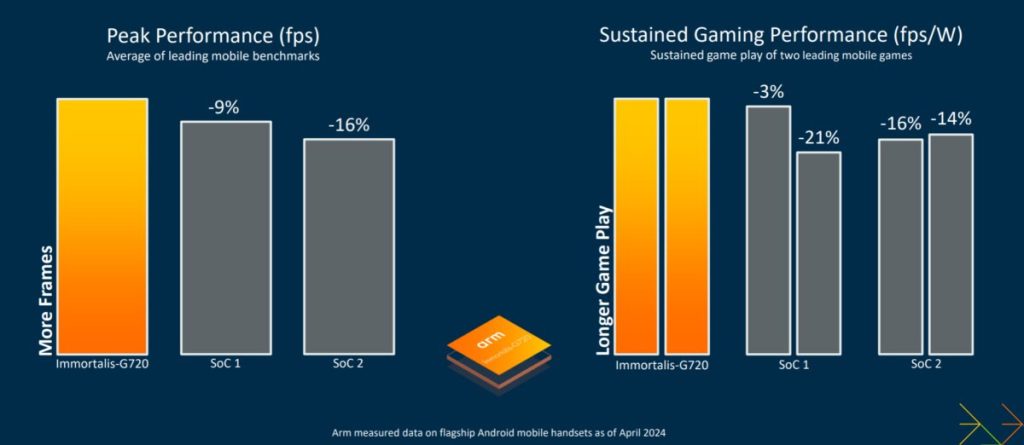
ARM says that this offers 46% performance improvements, on average, compared to Immortalis-G720. Genshin Impact is 49% more performant, while Roblox runs 46% faster compared to the predecessor, according to ARM.
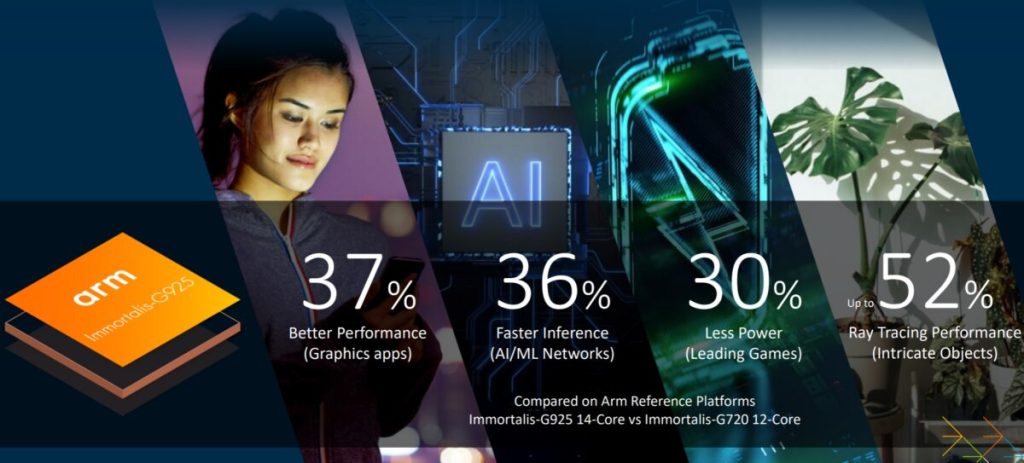
Other popular mobiles games offer performance improvements in the range of 29% to 72%, including Call of Duty Mobile, Diablo Immortal, the Day After Tomorrow, Fortnite and PUBG Mobile, said the company.
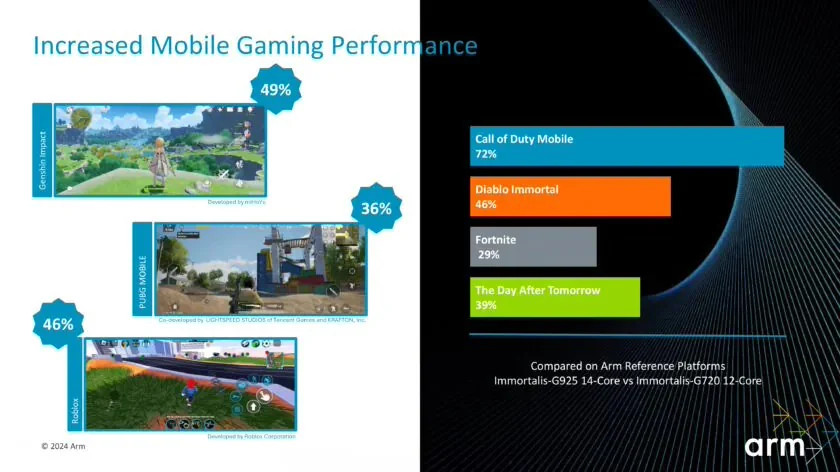
Immortalis-G925 introduces a new mechanism called fragment prepass that removes the need for applications to do any object or primitive sorting and improves the efficiency of reducing overdraws when processing geometry workloads.
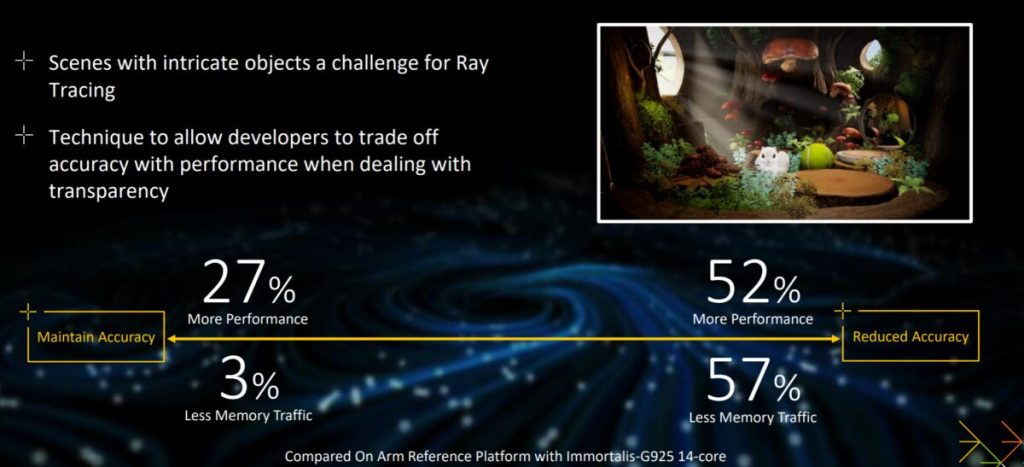
Immortalis-G925 promises up to 52% improvement in ray tracing performance with intricate objects.
This includes 27% more performance while maintaining the same level of accuracy in the transparency of gaming scenes. Alternatively, developers could choose to slightly reduce the accuracy in the transparency of gaming scenes, but then obtain an impressive performance improvement of up to 52% along with a 57% reduction in memory traffic, according to ARM.

Immortalis-G925 now supports 50% more shader cores, and the largest configuration on offer to 24 Cores compared to the maximum of 16 in the previous generation.

- Mali-G725 scales between 6 and 9 cores and is targeted for premium mobile handsets. However, it still offers the same API support as Immortalis-G925, while delivering a compelling and immersive gaming experience for lower device tiers not targeted by Immortalis-G925.
- Mali-G625 is scalable between 1 and 5 cores and targets smartwatches and entry-level mobile devices.
AI performance
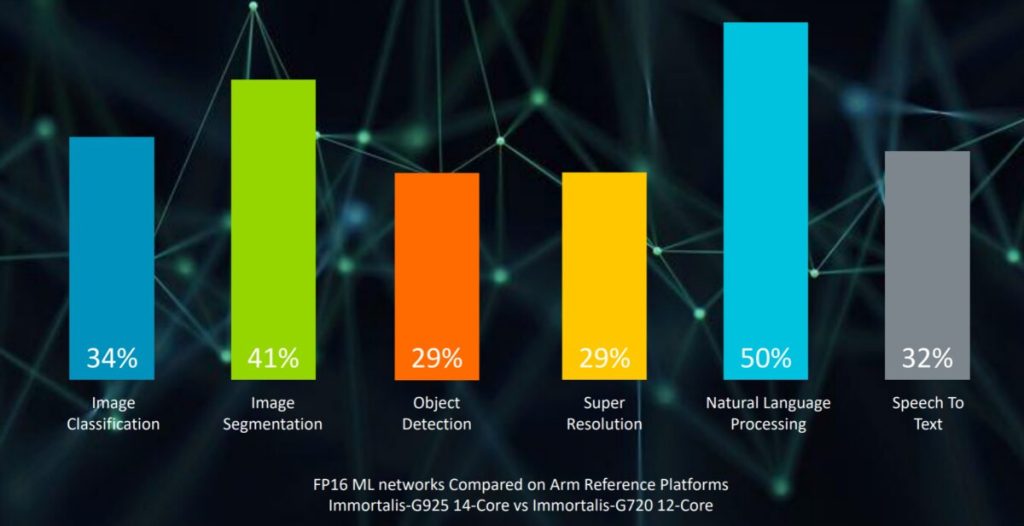
Immortalis-G925 promises 34% faster inference across AI and ML networks compared to Immortalis-G720.
While the majority of AI processing can take place on the CPU, the GPU offers acceleration capabilities for various AI use cases, including image classification, image segmentation, object detection, natural language processing, and speech to text, said the company.
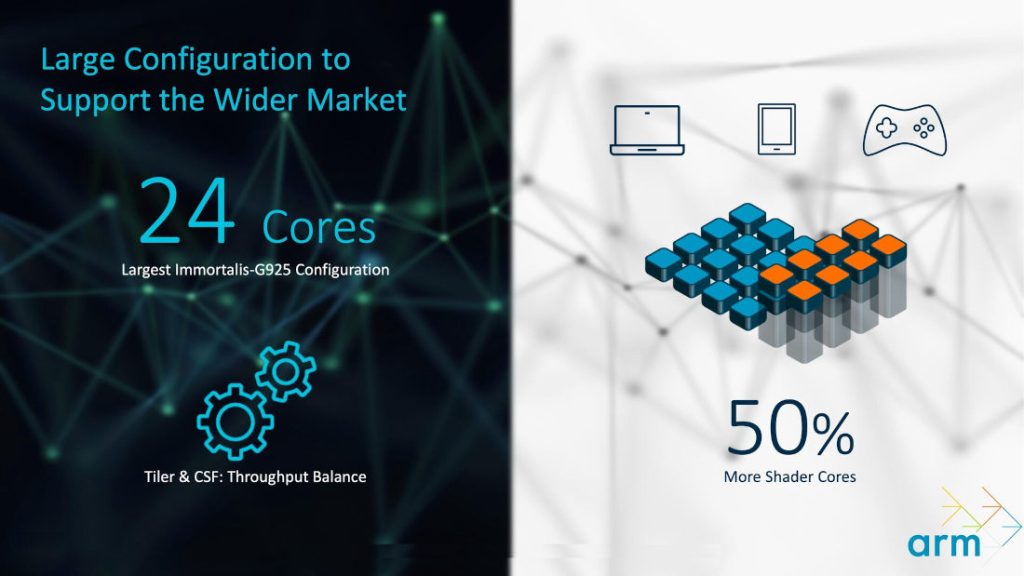
Through Immortalis-G925, Mali-G725 and Mali-G625, ARM said that it is targeting a broad spectrum of consumer devices across different tiers, from flagship to entry-level
With the new GPUs it aims to deliver unprecedented levels of gaming and AI performance for faster, more immersive, more intelligent visual experiences. We can expect SoCs with new devices starting from later this year. MediaTek Dimensity 9400 will likely be the first to use these CPUs and Immortalis-G925 GPU.
